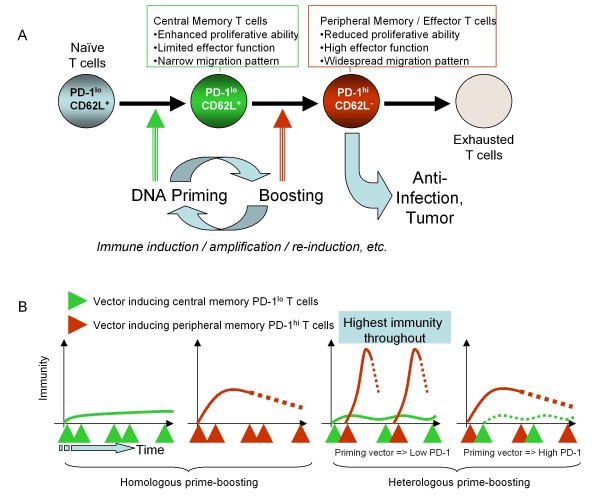Figure 4.
The mechanism of prime-boosting in relation to PD-1-expression and central memory T cells. The flowchart in Figure 4A depicts schematically a proposed mechanism explaining the effectiveness of DNA priming - heterologous boosting in achieving superior immunity in immune competent organisms. Alternating DNA priming with heterologous boosting (viral vectors, recombinant proteins, peptides, cells, or cell lysates), achieves alternating production of 'central-memory' low PD-1 cells and highly differentiated effector T cells, respectively. Figure 4B is a temporal perspective on the synergy and differential output of priming and boosting vectors/regimens, respectively. It offers an explanation to why the exact prime-boost sequence is important based on the differential capability of vectors or regimens to elicit T cells with different properties such as susceptibility to negative regulatory mechanisms.

